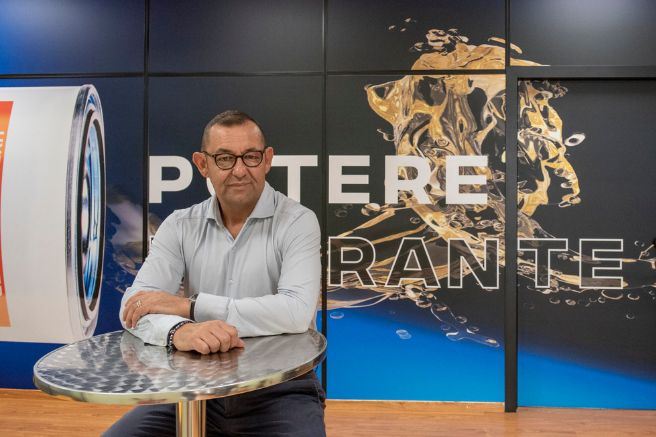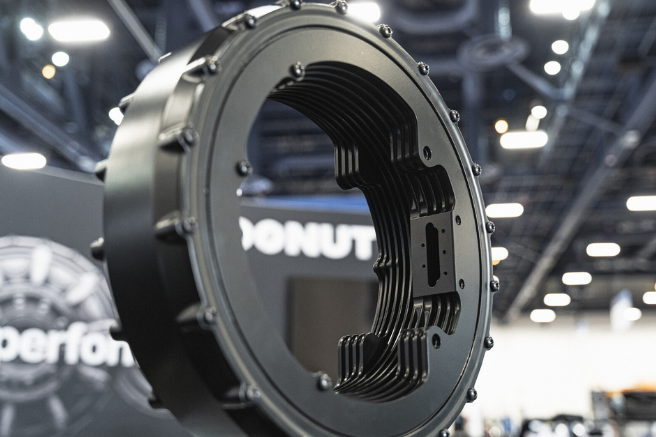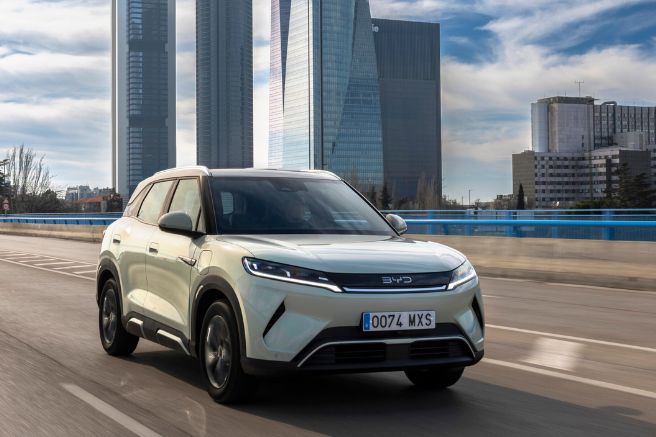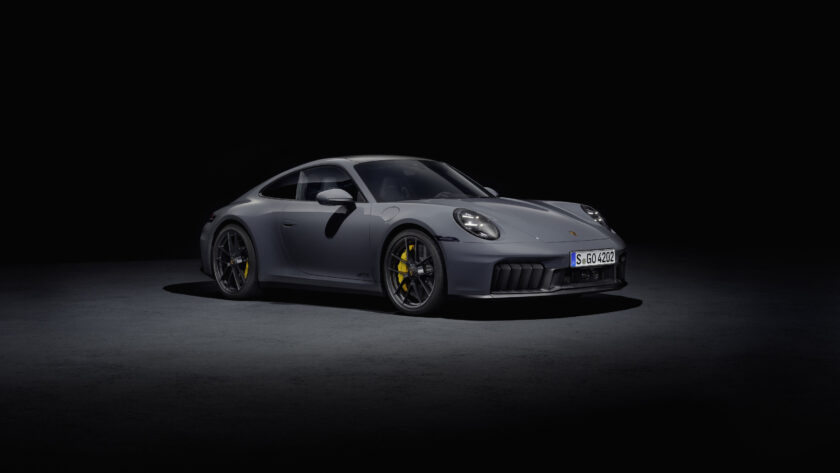
Porsche renews its symbol of sportiness. The iconic “911” in its “Carrera GTS” version becomes electrified, debuting the new “T-Hybrid” technology—a compact and lightweight hybrid system that pairs a new turbocharged six-cylinder engine with a displacement of 3.6 liters with two electric units integrated into the turbocharger and transmission.
A simple three-digit number has been synonymous with Porsche worldwide since 1963. “911” is more than just a label; it embodies the very essence of the German brand’s sportiness, representing an iconic, timeless allure that has accompanied Porsche’s technological evolution, serving as a pioneer for the most refined solutions developed over the decades in Zuffenhausen. At its birth 61 years ago, it introduced Porsche’s first rear-mounted six-cylinder engine, and 11 years later, its second generation marked the debut of turbocharging in a road-going sports car. Two decades later, in 1995, twin-turbocharging made the “911” the forerunner of a technology later adopted by prestigious brands worldwide. In 2006 and again in 2008, it brought to the forefront, respectively, variable-geometry turbocharging and dual-clutch automatic transmissions.
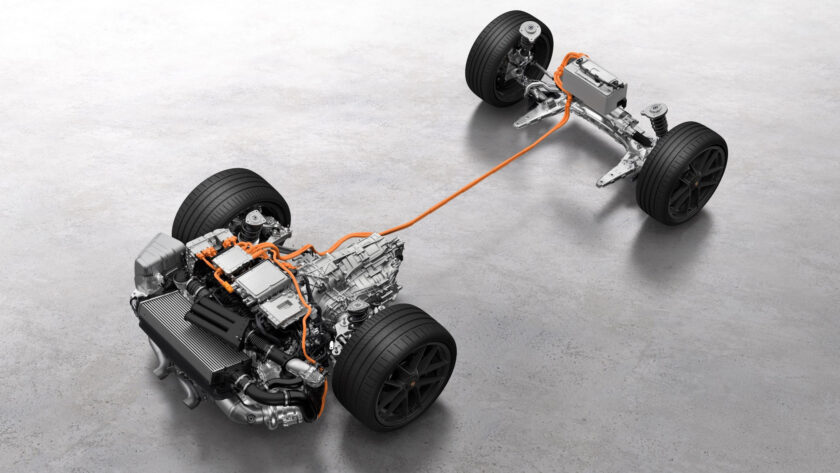
s tradition of technological innovation entrusted to Porsche’s icon is now reinforced with the debut of the first road-going “911” equipped with a lightweight and compact hybrid system designed to make the driving experience even more thrilling. The Stuttgart brand has tasked the “911 Carrera GTS” with launching the “T-Hybrid” technology, an electrification system derived from Porsche’s motorsport experience and re-engineered for everyday use. The heart of the system is the new 3.6-liter turbocharged six-cylinder engine, which has an increased displacement of 600cc compared to the previous “911 Carrera GTS” generation. This increase comes from expanding the bore by 97mm and lengthening the stroke by 81mm, allowing it to deliver up to 485 horsepower and 570 Nm of peak torque. This is made possible, in part, by the “VarioCam” technology, which optimizes torque and power delivery across the engine’s entire functional range in tandem with the fuel system.

The hybrid system benefits from two electric motors: the first is placed between the compressor wheel and the turbine powered by exhaust gases. It provides up to 11 kW (about 15 hp) to ensure immediate boost pressure, delivering highly dynamic and responsive power. The second electric motor, a permanent magnet synchronous type, is integrated into the revamped eight-speed dual-clutch automatic transmission “PDK”, adding up to 40 kW of power and 150 Nm of torque to the combustion engine’s performance. The system is powered by a lightweight and compact high-voltage battery that matches the size and weight of a traditional 12-volt starter battery but can store nearly two kilowatt-hours of energy, operating at 400 volts.
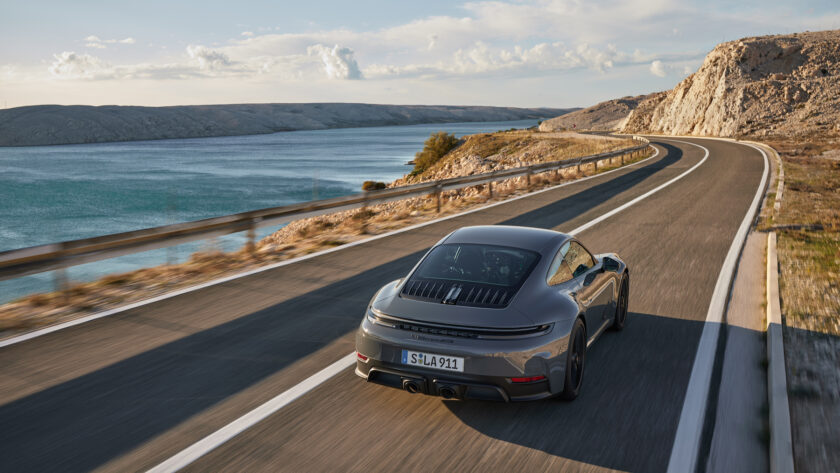
Configured in this way, the powertrain of the new Porsche “911 Carrera GTS” produces a total of 541 horsepower and a maximum torque of 610 Nm, enabling the German sports car to accelerate from 0 to 100 km/h in just three seconds and reach a top speed of 312 km/h. Extreme performance prompted Porsche engineers to revise the chassis structure of the new model compared to the previous generation, aiming to maximize safety and handling even in the most dynamic driving situations on mixed roads. For this reason, the “911 Carrera GTS” comes standard with rear-wheel steering, significantly improving the vehicle’s maneuverability and stability, particularly in tight, high-speed corners. The integration of the active chassis control system “PDCC” (Porsche Dynamic Chassis Control) into the high-voltage system allows for electrohydraulic adjustment, enhancing flexibility and operational precision.
Such a radical mechanical and structural evolution naturally demanded targeted design interventions, particularly affecting the lighting functions at the front, where all elements are now integrated into the LED headlights with Matrix technology. This allowed the removal of the front projectors, freeing up space for larger cooling air intakes in the front section. The front also features five visible vertical active cooling slats and an additional hidden flap on each side of the vehicle to close the bypass valve. These elements, for the first time on a “911”, are complemented by adaptive front diffusers in the underbody that adjust in concert with the ventilation slats to direct airflow as needed. When power demand is minimal, the flaps remain closed to optimize aerodynamics, while they open to channel more air toward the radiators when power demand is high.

At the rear, a redesigned light strip and integrated arc make the vehicle’s section wider and deeper than previous versions, and the grille connecting to the rear window has been redesigned, now featuring five slats instead of nine to harmonize with the central repositioning of the dual exhaust system, creating space for a new diffuser on the sides.
Style and Technology Go Hand in Hand

Designed to seat just two passengers, though a 2+2 configuration is available as a no-cost option, the interior of the “911 Carrera GTS” blends Porsche’s quintessential sporty DNA with the latest infotainment and driver assistance technologies. In this context, the “Porsche Driver Experience” system is driver-centric, featuring intuitive and immediate controls, with essential functions like the drive mode selector placed directly on or around the steering wheel. Physical controls are complemented by a fully digital 12-inch curved instrument cluster capable of offering up to seven customizable display options, including the exclusive “Classic” display that evokes the traditional five-round Porsche dials, with the tachometer at the center. The infotainment system is controlled through the “PCM” (Porsche Communication Management) system, which can be operated via a high-resolution 10.9-inch central touchscreen, allowing for advanced customization of driving modes and improved control of assistance systems, including the ability to display information directly on the instrument cluster and use vehicle functions through Apple’s voice assistant, thanks to enhanced “CarPlay” integration.

